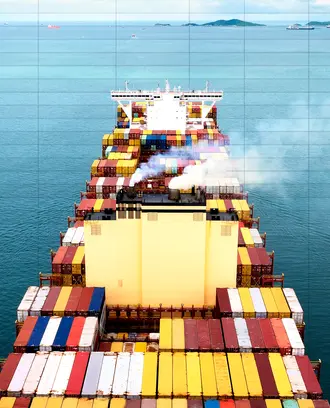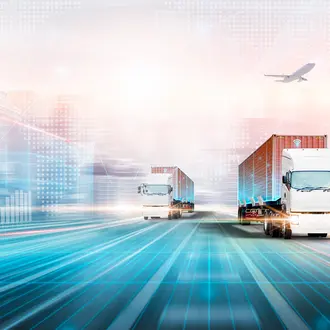Credit: Mimi Phan / iStock
Like many other specialties, supply chain has undergone significant change in the past 20 years. Seeking to tap the expertise of executives, we asked four MIT alumni to share their insights into the challenges, misunderstandings, and midcareer opportunities in supply chain.
industry Advisors



Marina Mattos
PhD ’18
Director of Global Supply Chain Innovation at Converse (Nike Inc.)
See profile

Nima Subramanian
MBA ’07
VP, GM North America Large Molecule Platform, Janssen Pharmaceutical Cos
See profileHere’s what they had to say.
What challenges need to be addressed in supply chain? What new roles are emerging, and where do you see opportunities for aspiring professionals to contribute and gain recognition?
Nima Subramanian — The last few years have taught us how sensitive supply chains are to changes in the overall environment. The ability to plan for disruptions such as weather events, political disturbances, or pandemics is a critical challenge that is still not fully addressed. To this end, roles in data sciences and predictive analytics as applied to supply chain are emerging fields. If analytical tools could help predict and prevent essential health care supply shortages, it could be the difference between life and death for someone in need.
Scott Lescher — One of the larger challenges facing us today is how we continue meeting customer needs while being better stewards of our planet. Leaders who are knowledgeable in the environmental impacts of existing processes, are passionate in learning about and developing new technologies, and can apply the tools of supply chain to chart our transition to environmentally friendly methods are the ones who can help reverse trends impacting our planet.
Jaspar Siu — The bullwhip effect is a phenomenon where demand-supply variability increases in magnitude as we move further away from the customer in the supply chain. Changing customer behaviors and demands from the COVID-19 era led to a mismatch in production capacity to meet the changing demands. One area that needs to be improved on — to battle the bullwhip effect — is business systems integration and information sharing among companies in a supply chain.
What’s one thing about supply chain that people outside the profession might not understand?
Siu — When people think about supply chain, they usually think about suppliers, materials, and logistics. However, one thing that is often overlooked that enables the entire supply chain is relationships. Whether it’s developing strategic relationships with suppliers or working with internal cross-functional stakeholders to work on supply chain projects, supply chains are powered by relationships.
Marina Mattos — Most people think that supply chain means logistics, but it’s not. Supply chain management encompasses the end-to-end processes, from product development to forecasting to sourcing to manufacturing to distribution to pricing and returns. Logistics specifically focuses on moving and storing goods. Logistics is a part of the supply chain, and both areas are necessary for operational performance that will ensure a business’s competitive advantage.
Related Articles
If you had to advise rising professionals in supply chain to add one skill to their repertoire, what would it be?
Lescher — I would recommend learning the discipline of product management along with basics of software development. Technology drives so much of supply chain today, so having an understanding of how to communicate product needs so that you can work with technology partners to build new software is critically important.
Siu — Metrics and data analytics. The most effective way to develop any strategy is to come up with a perspective, then back it up with the relevant metrics and continuously gather feedback with data to show that you are moving in the right direction.
Mattos — Coming from a technical background, I’m a big fan of leadership classes. Practicing how to solve problems together and identifying key characteristics of team members and how to use them in favor of the organization is something that we usually don’t practice until we face a challenge, a new team, or an organizational change.
Subramanian — Industry 5.0, or the human-centric way of optimizing our manufacturing and supply chain, is shaping our future. I would encourage rising professionals to start understanding the impact of this and how their roles will change in the future.
Looking over your career, how did you know it was time to make a move? What advice would you give to other midcareer supply chain professionals contemplating a change?
Mattos — I think it’s important to know where you want to get to, but also keep yourself open to new opportunities.
Lescher — The point at which I am less excited to go to work or the learning curve lessens is a clear signal that a change of some kind is required.
Who and what excites you in supply chain right now?
Siu — One technical area I am excited about is using blockchain, smart contracts, and non-fungible tokens (NFTs) to track material origination and transfers, and production origination and methodologies to trace out a responsible supply chain.
Mattos — The recent COVID-19 crisis exposed supply chain weaknesses and pushed companies to rethink their supply chains, providing a great opportunity for supply chain professionals to prove their value and build more resilient chains. More than ever, companies need to secure product availability, boost visibility, increase agility, and accelerate execution.
COVID also accelerated a long-term trend toward consumers buying more goods online. That brings new omnichannel capabilities for the supply chains, like buying online, pickup in-store and ship-from-store. To achieve this, companies must invest in their planning resources and logistics infrastructure, automated storage, retrieval picking, and robotic process automation to improve processes in the warehouses, and machine learning and big data analytics to support smart inventory allocation and faster delivery.
Subramanian — I am excited about the prospect of socially and environmentally responsible supply chains. In recent years, a lot of strides have been made in various industries toward reducing their carbon footprint. This is simply the right thing to do: Leaving the world a better place than how we found it.
Read next: Midcareer advice from 3 finance professionals



